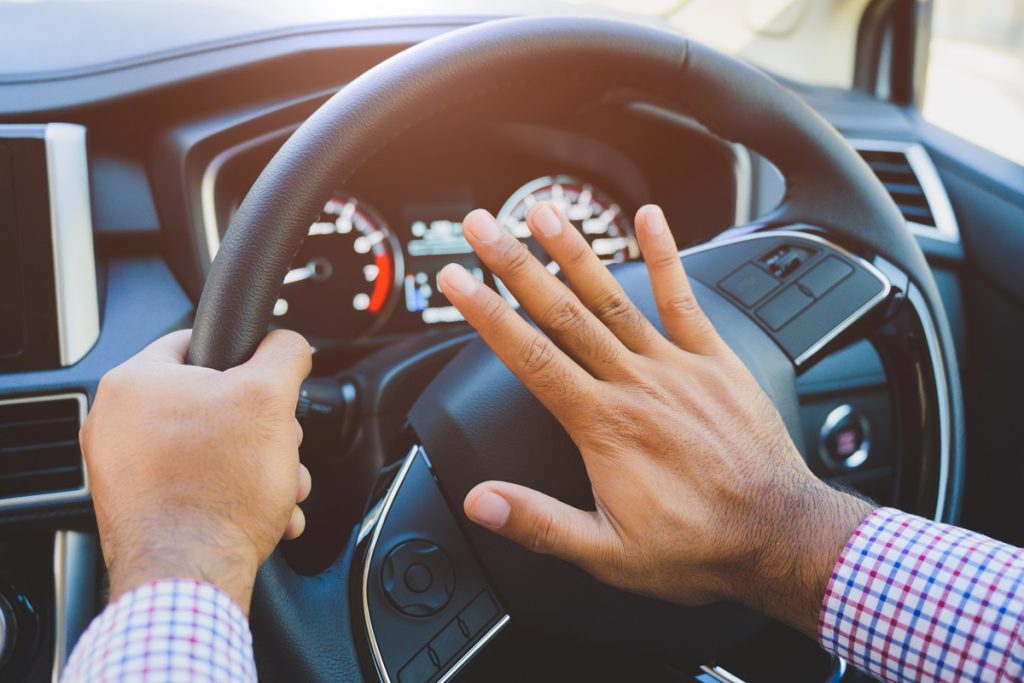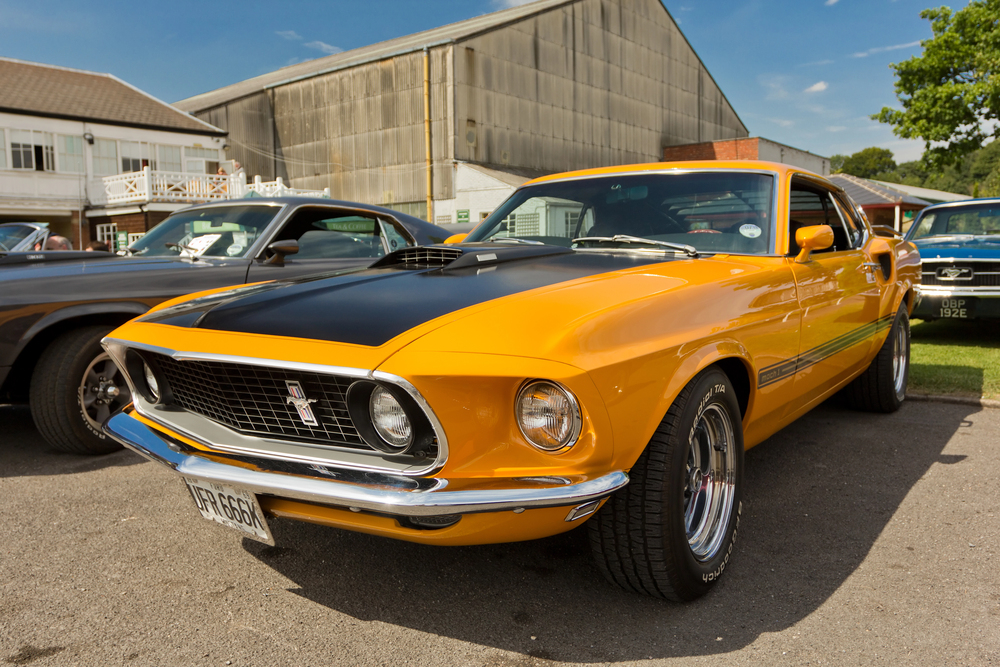Car insurance pricing can feel like a mystery, but did you know that some surprising factors can drive up your premiums? From seemingly harmless modifications to lifestyle choices, insurers analyze everything to assess risk. Here are 13 unexpected things that could be making your car insurance more expensive without you realizing it.
Your Car’s Paint Color, Especially if It’s Red or Brightly Colored

While insurers don’t directly charge more for red cars, flashy colors often attract police attention, leading to more tickets. Since speeding violations raise insurance rates, a brightly colored vehicle might subtly impact your premium. If you want to blend in, a neutral colored car might save you money.
Parking on the Street Instead of in a Garage or Driveway Regularly

Where you park your car overnight significantly affects your insurance rate. Cars parked on the street face higher risks of theft, vandalism, and accidental damage. Insurers prefer vehicles stored in secure garages or driveways, which reduces risk and lowers costs.
Using Your Car for Ridesharing Like Uber or Lyft Without Proper Coverage

Many insurers charge extra if they find out you’re using your car for ridesharing. Personal policies don’t typically cover commercial use, leaving gaps in coverage. Without rideshare, specific insurance, you could face higher premiums or denied claims.
Being a New Homeowner With a Mortgage to Pay Off Quickly

Surprisingly, homeowners sometimes pay less for car insurance than renters, but a new mortgage can change that. A fresh loan means added financial stress, which some insurers see as a risk factor. They assume financial pressure could lead to delayed car maintenance or missed payments.
Related: 12 Scary Car Emergencies and Exactly What to Do to Stay Safe
Modifying Your Car With Custom Rims, Body Kits, or Spoilers Excessively

Aftermarket modifications can make your car look cooler, but they also raise its value and theft risk. Custom parts are often expensive to replace, making insurers charge higher premiums. Even non performance mods like flashy rims can impact your insurance rates significantly.
Related: 13 Hidden Dangers on the Road That Most Drivers Ignore
Having a Poor Credit Score That Affects More Than Just Your Finances

Many insurers use credit scores to predict risk, assuming lower scores indicate financial instability. Poor credit can lead to significantly higher premiums, even if you have a spotless driving record. Maintaining good credit helps lower costs across multiple areas, including car insurance.
Related: Top 12 Car Technologies That Will Be Standard in Every Vehicle by 2030
Owning a Two-Door Coupe Instead of a Four-Door Sedan Model

Even if the cars have the same engine, coupes are often classified as sportier and riskier. Insurers consider two door vehicles more likely to be driven aggressively, increasing accident potential. Opting for a four door alternative could lower your insurance bill.
Having a Common Car Model That’s Frequently Targeted by Thieves

Some cars, like the Honda Civic or Toyota Camry, are top theft targets due to their popularity and easy to sell parts. If your vehicle has a high theft rate, insurers charge more to offset potential payouts. Adding anti theft devices can sometimes help counteract the cost increase.
Related: 13 Reasons Why Compact SUVs Still a Good Choice for City Living
Owning a Hybrid or Electric Car That Costs More to Repair Annually

While fuel savings are great, hybrids and EVs often have pricier parts and specialized repairs. Insurers factor in expensive battery replacements and limited repair shop availability when setting rates. Despite being eco friendly, these cars can be costlier to insure than traditional gas powered vehicles.
Related: Buying Your First Car? Read These 15 FAQs Before You Sign
Getting Married or Divorced, Which Changes Risk Perception Considerably

Marriage often leads to lower rates because insurers see married drivers as more responsible. However, a divorce can have the opposite effect, potentially raising premiums. Major life changes impact how insurers assess financial stability and driving behavior.
Being a Young Male Driver in Certain Age Brackets Automatically

Young male drivers, especially under 25, face higher insurance costs due to statistical accident risk. Even with a clean record, premiums remain higher than for female drivers of the same age. Safe driving habits and defensive driving courses can sometimes help reduce costs.
Related: New or Used? 15 Crucial Car Buying FAQs Uncovered!
Driving a Manual Transmission Car Instead of an Automatic One Regularly

Though less common, manual cars are sometimes viewed as higher risk because they require more skill to operate. Inexperienced drivers may struggle with stick shifts, leading to more accidents. While the difference isn’t huge, some insurers charge slightly more for manuals.
Related: Car Care Secrets: 15 Must-Know Auto Tips for Every Driver
Owning a Classic Car That Requires Special Coverage for Repairs Annually

Classic and collector cars often need specialized insurance due to their value and restoration costs. Standard policies don’t always cover rare parts or custom work. While collectible cars can appreciate in value, they usually come with higher insurance expenses.
Related: Is Your Car in Trouble? 15 Warning Signs and Fixes
Car insurance rates can feel unpredictable, but understanding these hidden factors helps you stay ahead. From lifestyle choices to vehicle modifications, many things can raise your premiums unexpectedly. Being aware of these details can help you make smarter financial and driving decisions.
Disclaimer: This list is solely the author’s opinion based on research and publicly available information.
15 Car Features That Are a Complete Waste of Money

When buying a car, it’s easy to get tempted by high-tech upgrades and luxury add-ons. However, not all features are worth the extra cost, some are gimmicks, others become outdated quickly, and a few are just plain unnecessary. Before you splurge on these so called “upgrades,” take a closer look at what you’re really paying for. These features may seem appealing at first, but they often add little value in everyday driving. These car features often turn out to be a complete waste of money.
Read it here: 15 Car Features That Are a Complete Waste of Money
New or Used? 15 Crucial Car Buying FAQs Uncovered!

Buying a car is a big decision, whether you’re considering a brand new model or a reliable used vehicle. With so many options, financing choices, and hidden costs, it’s important to make an informed choice. This guide answers 15 common car buying questions to help you find the best deal for your needs and budget.
Read it here: New or Used? 15 Crucial Car Buying FAQs Uncovered!
The Ultimate Car Owner’s Guide: 15 Common Auto Questions Solved

Owning a car comes with plenty of questions, from maintenance to troubleshooting unexpected issues. Whether you’re a new driver or a seasoned vehicle owner, knowing how to handle common problems can save you time, money, and stress. This guide answers 15 frequently asked car questions in simple terms, so you can keep your ride running smoothly and avoid costly repairs.
Read it here: The Ultimate Car Owner’s Guide: 15 Common Auto Questions Solved
You’ll love these related posts:


